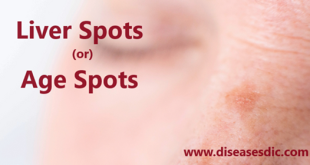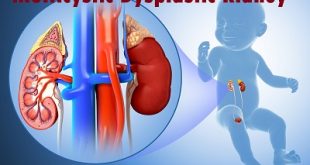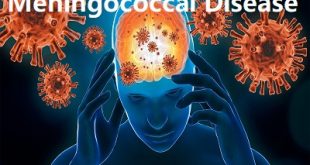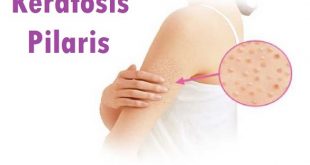What is Morgellons disease?
Morgellons disease (MD) is a rare disorder characterized by the presence of fibers underneath, embedded in, and erupting from unbroken skin or slow-healing sores. Some people with the condition also experience a sensation of crawling, biting, and stinging on and in their skin.
These symptoms can be very painful. They may interfere with your daily activities and the quality of your life. The condition is rare, poorly understood, and somewhat controversial.
The uncertainty surrounding the disorder makes some people feel confused and unsure of themselves and their doctor. This confusion and lack of confidence can lead to stress and anxiety.
What causes Morgellons disease?
- There are reports of Morgellons disease in patients with Lyme disease.
- Many health care professionals believe that Morgellons disease is a form of psychosis that causes the person to imagine that they are infested by parasites (delusional parasitosis) rather than a diagnosis based upon physical signs.
- Research on this syndrome has so far not found it to be caused by an infection. It is therefore not contagious.
- This condition has not been found to be the result of an environmental toxin.
Morgellons disease risk factors
- Have Lyme disease
- Were exposed to a tick
- Have blood tests that indicate you were bitten by a tick
- Have hypothyroidism
Signs and symptoms
People who have Morgellons disease report the following signs and symptoms:
- Skin rashes or sores that can cause intense itching
- Crawling sensations on and under the skin, often compared to insects moving, stinging or biting
- Fibers, threads or black stringy material in and on the skin
- Fatigue
- Difficulty concentrating
- Short-term memory loss
- Depressed mood
The intense itching and open sores associated with Morgellons disease can severely interfere with a person’s quality of life.
In addition to symptoms from the skin, individuals often have symptoms from other organ systems:
- Nervous system: Headaches, fatigue, visual disturbances, tinnitus (ringing in the ear), short term memory deficits and emotional lability (instability).
- Cardiovascular: Intolerance of changes in blood pressure, irregular heart rates, and high pulse rates.
- Respiratory: Variable degrees of coughing and mild shortness of breath of which there are no medically determined explanations.
- Musculoskeletal: Diffuse musculoskeletal pain, fibromyalgia, and chronic fatigue syndrome.
Pathogenesis of Morgellons Disease
Starting from the condition described in Symptoms paragraphs, the disease usually develops in two different ways, the first developing and worsening the previous skin condition, the other involving internal organs.
As for the skin, after 6-12 months, alopecia, grey hairs, crusts, erythema, and cellulitis are common to be seen; environmental and physical factors can worsen or accelerate the disease.
As the disease proceeds, internal symptoms arise physical weakness, reduced efficiency, Chronic Fatigue Syndrome with concentration problems, neurological signs, and Meningitis or Encephalitis, as well gastrointestinal failure, unexplainable back pain, coughs, rigid neck and other parts, also a generally decreased ocular ability with Keratitis inflammation and a progressive parodontal disease.
Problem is, those symptoms can be caused by Lyme disease, but also by Enteroviruses, EBV, Herpes Simplex 2, HIV (for what concerns viruses), and bacteria like Streptococcus B, Listeria monocytogenes and Enterobacteria.
Morgellons disease Complications
- Constant anxiety, discomfort and obsessive behaviors all lead to an increasingly miserable situation for sufferers.
- Regardless of which side of the real/not real fence you fall on, what is obvious is that people who believe they have Morgellons are in real, debilitating pain.
- Repeatedly scratching or picking at your sores and scabs, crawling skin, or erupting fibers can cause bigger wounds that become infected and won’t heal.
- If the infection moves into your bloodstream, you can develop sepsis. This is a life-threatening infection that needs to be treated in the hospital with strong antibiotics.
- Try to avoid touching your skin, especially open sores, and scabs. Apply an appropriate dressing on any open wounds to prevent infection.
Diagnosis and Test
Medical History and examining symptoms
Your doctor will likely want to hear about both your symptoms and discuss your medical history. Some doctors believe that the causes for Morgellon’s may be at least partially psychological. A study by the Centers for Disease Control and Prevention reported that people suffering from Morgellon’s disease often had a medical history which included one or more of the following conditions:
- High blood pressure
- Allergies
- Arthritis
- Skin infections like scabies
- Mental illnesses like depression, anxiety, or attention deficit disorder
- Drug abuse
Skin biopsy
This will enable the doctor to test the affected skin against known infections and environmental factors. This may be useful in ruling out causes other than Morgellon’s. Be aware that when the Centers for Disease Control and Prevention analyzed the skin of patients suffering from Morgellon’s, they did not find evidence of an infection. This may support a psychological cause for Morgellon’s. The Centers for Disease Control and Prevention found that:
- No unusual bacteria were infecting the skin samples.
- The fibers in the sores were usually those that could have come from clothing or bandages, such as cotton or polyester.
- The most frequent skin problem observed was sun damage.
Test
A recent scientific study found that filaments in the skin of people with Morgellon’s were made of keratin and collagen, not from clothing. This supported the conclusion that Morgellon’s is associated with the Borrelia spirochetes that cause Lyme disease. If you think you may have Morgellon’s disease, ask your doctor to test you for Lyme disease and other tick-borne diseases.
- The testing should be done by a laboratory and clinician who is familiar with Lyme disease.
- The Centers for Disease Control and Prevention reports that Morgellon’s is not always associated with Lyme disease.
Treating Morgellon’s Disease
Gather a team of doctors you trust
Because Morgellon’s is not well understood, you may benefit from the opinions of doctors from different fields. It is important that all of the doctors are thorough in their examinations and that they listen to you and take your symptoms seriously. You may want to consider talking to:
- Your general practitioner
- A dermatologist
- A psychologist or psychiatrist
- A specialist in Lyme disease and other tick-borne illnesses.
Support your immune system with a healthy diet
A healthy diet will help your body repair and heal any wounds you may have. It will also boost your immune system to help you fight any infections that may be present. The Morgellon’s Foundation in the UK recommends:
- Supplying your body with sufficient energy by choosing complex over simple carbohydrates. Complex carbohydrates take longer to digest and provide energy for longer. They include whole-grain bread, brown rice, oats, buckwheat, couscous, and whole-wheat pasta. Limit your intake of processed sugars including cookies, cakes, and candies.
- Get a rich array of vitamins and minerals by eating lots of diverse fruits and vegetables. The vitamins and minerals support important physiological processes in your body, including those necessary for healing. Excellent sources include dark green leafy vegetables like spinach and salads topped with different fruits and vegetables such as tomatoes, cucumber, carrots, apples, orange slices, or berries.
- Get protein from healthy sources. Eat lean meats like poultry and fish. If you eat red meat, trim the fat off. Vegetarians can get protein from chickpeas and beans.
- Cook with herbs that may have antibacterial or antifungal properties. Options to try include: black pepper, cloves, coriander, chili, cayenne, turmeric, and cumin.
Use self-care techniques during bathing
The Morgellon’s Foundation recommends trying several different options to cleanse your wounds and remove any filaments that might be present. Consult your doctor before using these techniques to make sure they will be safe for you, especially if you have open wounds.
- Exfoliate your skin.
- Take a bath with disinfectant mixtures in it.
- Massage your skin with olive oil or bentonite clay after bathing.
Keep your environment clean
This means being diligent about keeping your house, clothes, and pets clean and well cared for.
Manage stress
Morgellon’s is highly uncomfortable and distressing for those who suffer from it. Try to lower your stress levels by taking care of yourself both physically and mentally.
Stay open-minded about treatments
Your doctor may suggest seeing a psychologist or psychiatrist. This may be helpful for two reasons:
- The physical symptoms are extremely distressing for sufferers, which can lead to depression and anxiety. Treating depression and anxiety may substantially improve your quality of life.
- If there is a psychological component to the disease, treating any underlying conditions may help to resolve the Morgellon’s. Find doctors you trust and can speak openly with.
Medications
Because there is no known cure, the medications your doctors suggest may vary depending upon what symptoms you have. Your doctor may suggest:
- Antibiotics to treat bacterial infections associated with Lyme disease
- Antifungal medications to treat skin infections
- Anti-parasite medications to kill parasites
- Painkillers to deal with muscle and joint pain
- Anti-histamine medications to address itching and irritation
- Sleep medications to reduce sleep disturbances
Coping with Morgellons disease
Because so much is unknown about MD, it can be hard to cope with the condition. The symptoms may seem strange to people who do not know about or understand them, even to your doctor.
People with MD may worry that others think it’s “all in their head” or that no one believes them. This can leave them feeling afraid, frustrated, helpless, confused, and depressed. They may avoid socializing with friends and family due to their symptoms.
Using resources such as support groups can help you cope with these issues if they occur. Support groups can help you understand what is happening and give you the opportunity to talk about it with others who have been through the same experience.
Support groups can help you get accurate information about current research on the cause of your condition and how to manage it. With this knowledge, you can educate others who may not know about MD, so they can be more supportive and helpful to you.
 Diseases Treatments Dictionary This is complete solution to read all diseases treatments Which covers Prevention, Causes, Symptoms, Medical Terms, Drugs, Prescription, Natural Remedies with cures and Treatments. Most of the common diseases were listed in names, split with categories.
Diseases Treatments Dictionary This is complete solution to read all diseases treatments Which covers Prevention, Causes, Symptoms, Medical Terms, Drugs, Prescription, Natural Remedies with cures and Treatments. Most of the common diseases were listed in names, split with categories.








what type of disease bacterial or Viral?
The condition is relatively uncommon and the cause isn’t fully understood. Testing for infection by bacteria or parasites is usually negative.
can the disease more affective for a long time after? any specific reason.?
since it is caused by bugs it may not appear for a long time unless you exposed to the bugs.